#Dance of Himachal Pradesh
Text
#Best Resorts in Bangalore For Day Outing#Places To Visit Near Shirdi Within 100 KM#Tapola Hill Station#Resorts Near Bangalore For Day Outing#Resorts in Bangalore for Day Outing#Best Time to Visit Shimla for Snowfall#Best Time to Visit Himachal Pradesh#Hill Stations Near Coimbatore#Tourist Places Near Shirdi Within 50 KM#Himachali Lok Geet#Himachal Traditional Dress#Dance of Himachal Pradesh#Dance Form of Himachal Pradesh#Chandigarh to Narkanda#Hotel Snowflake Narkanda#list of 5 Star hotels in Bangalore with contact details#Myaarpmedicare com login#Romantic weekend getaways within 3 hours of me#Fitoofitness.in work out type detail
0 notes
Text
Dance Traditions in Himachal
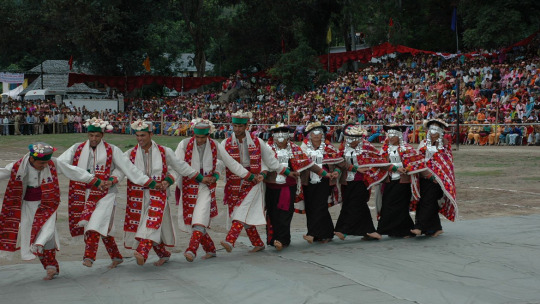
0 notes
Text
5 Of The Best Cafes You Must Visit In Kasol (Parvati Valley)
Nestled in the Parvati Valley of Himachal Pradesh, Kasol is a popular destination among travellers and backpackers. It’s a small town located amid lush green trees and majestic mountains. Known for its scenic beauty, trekking trails, and vibrant culture, Kasol has much to offer to anyone visiting this beautiful town. One of the main attractions of this place is its cafe culture. Cosy cafes built…
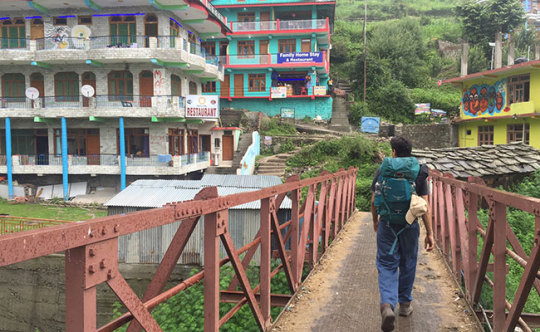
View On WordPress
#bar in kasol#cafe in manikaran#cafes in kasol#Himachal Pradesh#kasoli village#moon dance cafe kasol#parvati valley
0 notes
Text
पांगी घाटी ने फिर ओढ़ी बर्फ की सफेद चादर, दुनिया से कटा संपर्क, तस्वीरें
पांगी घाटी ने फिर ओढ़ी बर्फ की सफेद चादर, दुनिया से कटा संपर्क, तस्वीरें
पांगी: जिला चंबा के जनजातीय क्षेत्र पांगी में मौसम ने करवट ली हुई है और वीरवार सुबह तकरीबन आधा फिट बर्फबारी मुख्यालय किलाड़ में हुई है जिसकी वजह से पांगी घाटी के लोगों का जीवन अस्त-व्यस्त हो गया है वही ऊपरले क्षेत्रों में तकरीबन 1 फीट तक बर्फबारी हुई है। इस बर्फबारी के बाद पांगी घाटी में बिजली व्यवस्था है समेत पानी व्यवस्था ठप हो चुकी है बर्फबारी होने से घाटी में लोगों का जीवन अस्त व्यस्त हो गया…
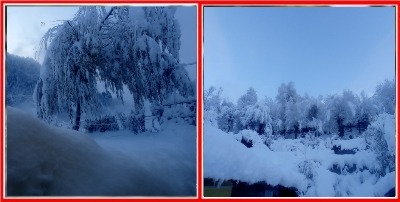
View On WordPress
#pangi chamba himachal pradesh#pangi dance of himachal pradesh#pangi falls#pangi himachal#pangi himachal kinnaur#pangi himachal pradesh#pangi himachal pradesh weather#pangi valley himachal pradesh#panji himawan#weather chamba pangi himachal pradesh#ओढ़ी#कटा#की#घाटी#चादर#तस्वीरें#दुनिया#ने#न्यूज़#पांगी#पांगी हिमाचल प्रदेश#प्रदेश#प्रादेशिक#फ़िर#बर्फ#मेरी#संपर्क#सफेद#से#हिमाचल:
0 notes
Text
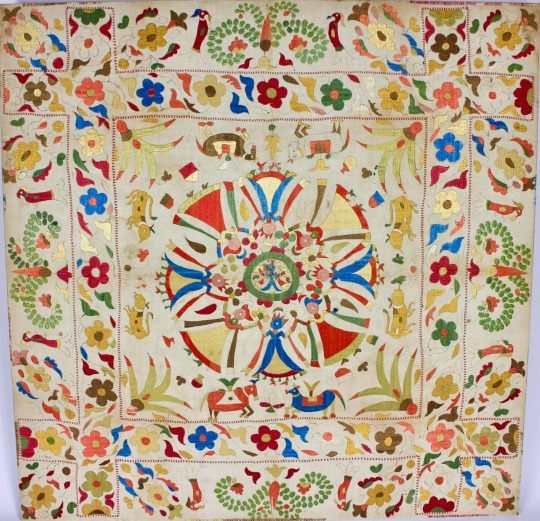
19th Century Chamba or Kangra rumal embroidery depicting Krishna's rasa dance with the gopis (milkmaids) bordered by flowers, trees, birds and animals. Foss silk embroidery on fine muslin. Himachal Pradesh, Northern India.
Stothert and Trice
179 notes
·
View notes
Text
Ma Kali & Kali Mantra: Meaning, Significance, and Benefits 🪷🪬🧿

Goddess Kali is the divine protector of the earth who is also known as Kalika in Hinduism. But due to the goddess' destructive power, Kali is also known as the Dark Mother. As per mythology, the word Kali comes from the Sanskrit word Kala, which means time. Goddess Kali, therefore, represents time, change, power, creation, preservation and destruction. The word Kali also means “the black one”, the feminine noun of the Sanskrit adjective Kala. As per spiritual texts, Goddess Kali is considered a fierce form of Durga/Parvati and the consort of Lord Shiva. Besides being a destructor of bad powers of the universe, Kali ma is also a great giver to those who do good deeds and worship her with utmost devotion. Hence pleasing Kali ma allows the native a lot of compassion and blessings.
As per mythology, Kali maa is the first of the 10 Mahavidyas or manifestations of the Great Goddess. She is usually portrayed in a form where she dances or stands on her consort God Shiva, who lies calm and prostrated beneath her. Kali Maa is worshipped throughout the country but majorly in the seas of Bengal, Assam, Kashmir, Punjab, Himachal Pradesh, Kerala and Tamil Nadu, along with Nepal and Sri Lanka.
Over the centuries, the Goddess Kali has taken many forms to protect the Dharma and religion and destroy the one who commits sins. Astrologers say that Maa Kalika is the most awakened goddess in Hinduism and has walked the earth in four forms – Dakshina Kali, Shamshan Kali, Mother Kali and Mahakali. All these forms have served different purposes, right from Raksha Slaughter to the healing of the earth and its natives.
Kali Mantra
Story behind the destructive form of Maa Kali
There was a notorious asura named Daruk who had pleased Brahma and thus was rewarded a boon. The boon allowed the asura to cause grief to the Gods and Brahmins. If this wasn't enough, Daruk also started setting his kingdom in heaven. Seeing this, all the Gods reached out to Brahma and Vishnu, where they were told only a lady can kill the evil Daruk.

Hearing this, all the Devtas donned a female form and went to fight Daaruk, only to get defeated by him. Post the failure, the Gods reached the Kailash mountain to share the ordeal with Lord Shiva. After listening to the Gods, Lord Shiva looked at Maa Parvati and said, "hey Kalyani I pray to destroy the evil Daruk and save the world." Listening to this, a part of Mother Parvati entered Lord Shiva.
That part of Bhagwati Mata entered the body of Lord Shiva and due to the poison in the throat of Shiva, Bhagwati Mata turned into a black Goddess. Lord Shiva felt that part inside of him and opened his third eye and appeared as Goddess Kali in a fierce form.
Just like Shiva, Maa Kali had a third eye and a lunar line. The throat had a sign of Karla poison, and she carries a trident. Seeing the fierce form of Mother Kali, Gods and Siddhas started fleeing. With the mere hum of Maa Kali, all the Asura army including Daruk was burnt to ashes. Yet, the fierceness of Kali wasn't over. The mother’s anger began to burn the whole world. To save the world from the wrath, Shiva took the form of a child and appeared in front of Kali.
When mother Kali saw that child Shirupi, she became fascinated by that form. She embraced Shiva and started feeding him with her breasts. Soon, Maa Kali became unconscious due to Shivji drinking the wrath of mother Kali. In order to bring the Goddess into consciousness, Shivji performed Shiva Tandava. When mother Kali came back to her senses, she saw Shiva dancing and joined him, due to which she was also called Yogini.
The two forms of Goddess Kali
In Hinduism, Goddess Kali is mainly portrayed and worshipped in two forms. The first is the four-armed form, and the second is the 10-armed form, which is also known as Mahakali. Both these forms have different meanings attached to them.
Four-armed form
The Indian art portrays the four-armed Kali in black or blue colour. The eyes of Kali are red in colour which depicts rage. Her hair is shown dishevelled, small fangs sometimes protrude out of her mouth and her tongue is lolling. The Goddess wears a skirt made of human arms and a garland which is made of human heads. The four-arm form of kali stands on the calm and prostate Shiva. All her four hands hold a different thing, mainly a sword, a Trishul (trident), a severed head, and a bowl or skull-cup (kapala) catching the blood of the severed head.

In her left hands, Kali holds a sword and a human head. Here, the sword signifies divine knowledge, meanwhile the human head signifies the human ego, which must be slain by divine knowledge in order to attain moksha.
The right hands of Maa Kali holds the Abhaya (fearlessness) and Varada (blessing) mudras, which means her devotees will always be saved as she will guide them during and after life.
The Goddess also dons a garland consisting of human heads, variously enumerated at 108 or 51, which is why she is known as the mother of all the mantras in astrology.
The ten-armed form
The ten-armed form of Kali is her Maha Kali form. In her Maha Kali form, she is depicted as shining like a blue stone. Maha Kali has as many as ten faces, ten feet and three eyes for each head. All her ten hands carry various components, each of which represents the power of one of the Devas or Hindu Gods. This power is depicted in the form of the weapons that Maha Kali carries. The implication is that Mahakali is responsible for the powers that these deities possess and the implication is in line with the interpretation that Mahakali is identical to Brahman.
At times, people also tend to worship the “ek mukhi” or one-headed idol of Maha Kali displayed with ten arms, signifying the same concept.
The power tools of Kali are the Kundalini Shakti (the power of spiritual electricity); the Kriya Shakti, the power to creatively affect the universe; and Iccha Shakti, the power of will that personally compels our physical movements and actions, while in the universe it causes the galaxies to rush away from one another into the cosmic night. The chanting of various mantras helps the native have these energies for themselves.
How to chant the Kali mantras
Goddess Kali represents the colour black, and hence darkness appeals to her. This is how you should chant the Kaali Mantras.
Although Kaali Mantra can be chanted in the morning, hours after sunset are more feasible to recite these mantras.
It is best that you chant the Kaali Mantra on a new moon day (Amavasya). Wear the colour Red during the Maa Kali mantra recitation or Puja as Red is the colour that appeases the Goddess.
Also, if you plan to keep an idol or picture of Goddess Kali while reciting the mantra, you must make sure to keep it on a red cloth.
When reciting the Mantras, offer red flowers, fruits and sweets to Maa Kali. Always sit facing the East or North direction when reciting the Kali mantras.
As soon as you begin the recital, you will feel a certain vibration filling your being with strength and confidence.

Any Kali mantra you pick up, it is advised that you chant the Kaali mantra for 40 days to gain all its benefits.
For better benefits, don't eat non-vegetarian food or avoid eating onion and garlic as well.
Important Kaali Mantra
1. Kali Beej Mantra
Kreem is the Ekakshari beej mantra associated with Goddess Kali. As such, the beej mantra doesn't have a specific meaning, but it represents the vibrations that aid the spiritual and mental state of the mind. Chanting the Kali beej mantra connects the native with the energies of Goddess Kali. These transformational energies help the native in fighting evil forces around and within him. It is said that chanting the Kali beej mantra with utmost devotion grants different things - right from devotional to material - to the native depending upon the quality of his or her mind.
The Kali Beej mantra is:
|| ॐ क्रीं काली ||
Om Krim Kali
Meaning- K stands for full knowledge,
R means she is auspicious,
I mean she bestows booms, and
M means that she gives freedom.
‘Salutation to the Supreme.’
Benefits of chanting the Kali Beej mantra
As per astrologers, the Kali beej mantra chanting protects one from all the evil forces.
Also, chanting the Kali beej mantra with full devotion fulfils all your desires and brings positivity to the environment you reside.
The mantra is also recited to uplift the confidence of the native.
Best time to recite the Kali beej mantra After sunset
Number of times to chant this mantra 108 daily for 40 days
Who can recite the Kali beej mantra? Anyone
Chant this mantra facing East or North direction
2. Kali Mantra
Although Goddess Kali looks frightening, she always tends to listen to her devotees' prayers as she is very fond of them. The prayers are better communicated to the Goddess if the devotee chants the Kali Mantra when praying to Goddess Kali. The Kali mantra mentioned below is said to heal the native of his worries and brings him closer to God. The Kali mantra is simple and transforms the devotee to Pure consciousness to help him make better decisions in life.
The Kali Mantra is:
|| ॐ क्रीं कालिकायै नमः ||
Om Kring Kalikaye Namah
Meaning- This mantra is a sound representation of the Mother.

Benefits of chanting the Kali mantra
As mentioned above, the Kali mantra helps in transforming the devotee into pure consciousness, meaning the chanting helps in making his mind clutter-free.
The chanting of this Kali mantra rewards the native with utmost wisdom and knowledge.
The mantra relives one of all sorts of emotional pain. If you are having a hard time controlling your emotions, this mantra is very useful for you.
The mantra is said to bring the native unmatched courage.
Best time to recite the Kali mantra After sunset
Number of times to chant this mantra 108 daily for 40 days
Who can recite the Kali mantra? Anyone
Chant this mantra facing East or North direction
3. Maha Kali mantra
The Maha Kali mantra is not used much due to its purgative nature. However, the one who properly knows how to use the mantra can benefit from the unmatched courage and strength the mantra recitation promises to deliver. Maha Kali is the great divine form of Maa Kali and bestows the natives with the power to accept things around him and change accordingly. If you chant this mantra on a regular basis, you will end up feeling a thrust of positive vibrations around you, which will prompt you to make things happen for you.
The Maha Kali mantra is:
|| ॐ श्री महा कलिकायै नमः ||
Om Sri Maha Kalikayai Namah
Meaning - I bow my head to the Divine dark goddess Mother, Kali or I salute the Divine Mother, Kali.
Benefits of chanting the Maha Kali mantra
One must appease the Divine Mother by chanting this mantra in her honour in order to obtain her grace.
The Maha Kali mantra acts like a shield that saves anyone against the tough times ahead of him.
Reciting the Maha Kali mantra brings stability to the life, and helps the native better decide what is right and what is wrong for him.
Best time to recite the Maha Kali mantra After sunset
Number of times to chant this mantra 108 daily for 40 days
Who can recite the Maha Kali mantra? Anyone
Chant this mantra facing East or North direction
4. Kalika-Yei Mantra
Some problems in our life are just way too complex. The complexity is such that they keep us on our toes, barring us from enjoying and living life as it is meant to be. The Kalika-Yei mantra is for such problems. The mantra is especially useful for students and working professionals who constantly are under the stress of life, finding it hard to manage their personal and professional goals. The mantra also aids problems, doesn't matter how big.
The Kalika-Yei Mantra is:
|| ॐ कलिं कालिका-य़ेइ नमः ||
Om Klim Kalika-Yei Namaha
Meaning - Hail to the Goddess Kali, bless us with a conscious and insightful mind. Make us intelligent and wise.
Benefits of chanting the Kalika-Yei mantra
As mentioned above, the Kalika-Yei mantra is believed to bring relief from all kinds of problems, no matter how complex it is.
The mantra chanting is really useful for students and working professionals and helps them do better in life.
The mantra is protective of your life. It saves you from the danger of bad eye/buri nazar and hence keeps your progress intact.
Best time to recite the Kalika-Yei mantra After sunset
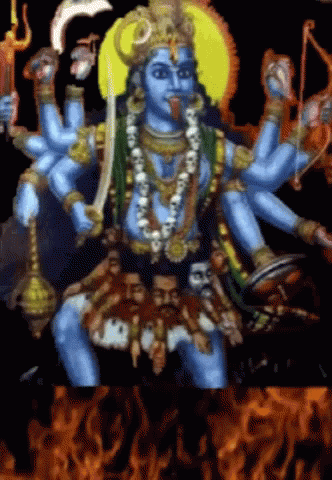
Number of times to chant this mantra 108 daily for 40 days
Who can recite the Kalika-Yei mantra? Anyone
Chant this mantra facing East or North direction
5. Kali Gayatri Mantra
The Kali Gayatri mantra is one of the most useful mantras if you seek quick success in life. For the natives struggling at growing in their careers, the Kali Gayatri mantra comes to the rescue as its vibrations fill the native with positive energies. The mantra provides success, well-being and happiness to the native.
The Kali Gayatri mantra is:
|| ॐ महा काल्यै
छ विद्महे स्मसन वासिन्यै
छ धीमहि तन्नो काली प्रचोदयात ||
Om Maha Kalyai
Cha Vidmahe Smasana Vasinyai
Cha Dhimahi Tanno Kali Prachodayat
Meaning - Om Great Goddess Kali, the One and only one, who resides in the Ocean of Life and in the Cremation Grounds that dissolve the world. We focus our energies on you, may you grant us boons and blessings.
Benefits of chanting the Kali Gayatri mantra
As the native chants the kali Gayatri mantra, his mind becomes divinely transformed and passes from the gross state of worldly affairs into Kali’s subtle light of pure consciousness.
The Kali Gayatri mantra helps the native in accomplishing tasks successfully.
The mantra recitation is said to free the native from all fears of life to help him take the needed step.
Best time to recite the Kali Gayatri mantra After sunset
Number of times to chant this mantra 9 times daily for 40 days
Who can recite the Kali Gayatri mantra? Anyone
Chant this mantra facing East or North direction
6. Dakshina Kali Dhyan Mantra
Dhyan is a state of mind which helps you connect with the divine in numerous ways. Also called the Karpuradi Stotra, the regular chanting of the Dhyan mantra aids the native to connect with the energies of Maa Kali, which are fearfulness, courage, boldness, valour and more. However, to have the best of this mantra, the native needs to chant the Dakshina Kali Dhyan mantra regularly and with the correct pronunciation.
The Dakshina Kali Dhyan mantra is:
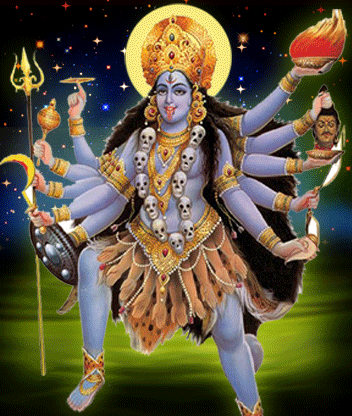
|| ॐ ह्रीं ह्रीं ह्रुं ह्रुं क्रीं क्रीं क्रीं दक्षिणकालिके क्रीं क्रीं क्रीं ह्रुं ह्रुं ह्रीं ह्रीं ||
Om Hreem Hreem Hrum Hrum Kreem Kreem Kreem Dakshina Kalike Kreem Kreem Kreem Hrum Hrum Hreem Hreem
Meaning - Salutations to the Goddess who is the preserver of earth and saves the universe from all kinds of troubles.
Benefits of chanting Dakshina Kali Dhyan mantra
Recitation of this mantra releases you from the binding web of adult pretence.
Dakshina Kali Dhyan mantra energises you with positive energy so that you can achieve your goal no matter how tough.
The chanting of the Dakshina Kali Dhyan mantra brings peace, happiness, and satisfaction to the native.
Best time to recite the Dakshina Kali Dhyan mantra After sunset
Number of times to chant this mantra 9 times daily for 40 days
Who can recite the Dakshina Kali Dhyan mantra? Anyone
Chant this mantra facing East or North direction
7. Kali Chants
Apart from Kali mantras, there are also some Kali Chants a native can chant to seek the blessing of Goddess Kali.
The Dakshina Kali Dhyan mantra is:
ॐ काली, काली! ॐ काली, काली!
नमोस्तुते, नमोस्तुते, नमो!
नमोस्तुते, नमोस्तुते, नमो ||
Om Kali, Kali! Om Kali, Kali
Namostute, namostute, namo
Namostute, namostute, namo
आनंद मां आनंद मां कलि
आनंद मां आनंद मां कलि
आनंद मां आनंद मां कलि
ॐ काली माँ ||
Ananda Maa Ananda Maa Kali
Ananda Maa Ananda Maa Kali
Ananda Maa Ananda Maa Kali
Om Kali Maa
Overall benefits of Chanting the Kali mantras
The Kali mantras are one of the most powerful mantras in astrology and thus hold the capability to protect you from the hexes.
The Kali mantra chanting resonates with vibrations that calm you down and help you in attaining peace.
Reciting the Kali mantra awakens the inner consciousness of the person, and thus brings stability to his or her life.
Chanting the Kali mantra helps you maintain cordial and harmonious relations with your family and loved ones.
If you chant the Kali mantra regularly and with full devotion, the Goddess shall bring an end to all your sufferings.
Chanting the mantra on a regular basis safeguards the native from the disasters that may bestow upon his health, wealth and happiness.
The regular chanting of the Kali mantra gives you strength thereby making you more powerful than the problems you face.

The chanting of the Maa Kali mantra helps in making your life more radiant. You shall feel the positive vibes if you chant these mantras on a regular basis.
The mantras aid the native's financial position and help in removing all debts.
In terms of love life too, reciting the Kali mantra can help in resolving issues surrounding your love life and can help you in achieving success all the way.
It provides success, happiness, progress, and well-being.
The chanting of the mantra, and the vibrations that release from it, help in uplifting your health.
The Kali mantras ward away the bad eye and any evil that attempts to stop your growth in life.
The Mantras help you to find a good match for matrimonial purposes. Chanting of Kali Mantra ensures any delay in marriage is resolved.
The chanting of Goddess Kali Mantra brings stability to life. You can decide what is good for your life. You always end up with good decisions.
I hope you enjoyed this blog more to follow shortly,
Culture Calypso’s Blog 🪷🪬🧿
#ma kali#hinduism#Indian#shiva#spiritualjourney#goddess#dark goddess#deity#my blogs#spirituality#religion#parvati
59 notes
·
View notes
Text
Enchanting Himachal Pradesh
Nestled in the western Himalayas, Himachal Pradesh, often referred to as the "Land of the Gods," is a haven for nature enthusiasts, adventure seekers, and spiritual wanderers. This enchanting Indian state is renowned for its breathtaking landscapes, vibrant culture, and a wealth of experiences waiting to be explored. Join us on a virtual journey through the spellbinding beauty of Himachal Pradesh.
Natural Splendor
Himachal Pradesh is a symphony of nature's grandeur. The state boasts a diverse topography, ranging from snow-capped peaks to lush valleys and pristine rivers. The towering Himalayan ranges offer a playground for trekkers and mountaineers, with popular destinations like Manali, Shimla, and Dharamshala offering a glimpse of this natural beauty.
2. Adventure Awaits
For adrenaline junkies, Himachal Pradesh is a paradise. Whether you're into trekking, paragliding, river rafting, or skiing, this region has it all. Solang Valley, Bir-Billing, and Kullu-Manali are just a few spots that beckon adventure seekers. Don't miss the chance to explore the mighty Rohtang Pass or undertake the challenging Hampta Pass trek.
3. Spiritiual Retreat
Himachal Pradesh is steeped in spirituality, with countless temples and monasteries dotting its landscape. Dharamshala, the residence of the Dalai Lama, is a major center for Tibetan Buddhism. McLeod Ganj, a part of Dharamshala, offers spiritual solace and scenic beauty. The serene monasteries in Spiti Valley are also worth a visit for a glimpse into the Buddhist way of life.
4. Culture & Traditions
The state's rich culture is reflected in its art, music, dance, and festivals. The colorful celebrations of festivals like Dussehra, Diwali, and Shivratri bring communities together, showcasing their vibrant traditions. The traditional Himachali attire, intricate handicrafts, and vibrant folk music and dance add to the cultural tapestry of the region.
5. Culinary Delights
Himachal cuisine is a treat for the taste buds. Don't leave without trying local dishes like Dham, Chana Madra, Babru, and Mittha. The use of aromatic spices and locally sourced ingredients adds a unique flavor to the cuisine. Sip on some warm Kangri Dham Chai as you soak in the beautiful surroundings.
6. Sustainable Tourism
Himachal Pradesh is committed to sustainable tourism practices. Efforts are made to preserve the fragile Himalayan ecosystem and promote responsible tourism. Treks and tours often focus on eco-friendly initiatives, and visitors are encouraged to respect local customs and nature.
Himachal Pradesh is a land of contrasts, where spirituality meets adventure, and nature's beauty knows no bounds. It offers something for every traveler, whether you seek the thrill of the mountains, the tranquility of spiritual retreats, or the warmth of the local culture. With its breathtaking landscapes and a rich tapestry of experiences, a visit to Himachal Pradesh is nothing short of a magical journey through the heart of the Himalayas. So, pack your bags and embark on an unforgettable adventure in the Land of the Gods.
#TECHWANDERER
8 notes
·
View notes
Text
MELUHHA. MELAKA. MELA. MEL. TA-MIL.
Meluhha/Melukhkha - This term appears in several ancient texts, including the Sumerian and Akkadian texts, and is thought to refer to the Indus Valley Civilization. Some scholars believe that the word has Dravidian origins.
Melaka - assemblage; “visionary encounters (with the Goddesses)”; the “union” (of Śiva and Śakti); Yoginīmelaka, “a meeting with Yoginīs”
Meru - This is a mountain that is considered sacred in Hindu, Buddhist, and Jain traditions. The word is believed to have Dravidian roots.
Mela - This is a Sanskrit word that means "gathering" or "assembly". It is commonly used to refer to large festivals and gatherings in India.
Melammu - This is a Sumerian word that means "divine radiance" or "divine glory". It is believed to have Dravidian roots.
Melakadambur - This is a village in Tamil Nadu, India, that is known for its ancient Hindu temple. The name of the village is believed to have originated from a combination of two words - "melai" (Tamil for high) and "kadambu" (Tamil for tree).
Melakarta - This is a system of organizing and classifying musical scales in Carnatic music, a classical music tradition from South India. The term "melakarta" literally means "primary scales" in Sanskrit, but its exact origins are unclear and it may have Dravidian roots.
Melaka - This is a city in Malaysia that was an important trading port in ancient times. The name is thought to have originated from a combination of two words - "mele" (Tamil for hill) and "ka" (Sanskrit for foot), referring to the city's location at the foot of a hill.
Melana - a form of dance in Odisha
Melap - a traditional musical instrument in Rajasthan
Melchham - a folk dance form in Himachal Pradesh
Mel - a festival celebrated in Assam
Melana - a religious festival celebrated by the Khasi tribe in Meghalaya
Mel - a community gathering in Punjab
Melo - a type of folk song in West Bengal
Melava - a gathering of people for a social or religious occasion in Maharashtra
Meluha - an ancient civilization in the Indus Valley
Mel - a gathering of people for social and cultural events in Kerala
Mela - a festival or fair held in various parts of India
Melat - a type of song in the Maldives
Melan - a traditional wrestling competition in Uttarakhand
Mela-kacheri - a type of music concert in Tamil Nadu
Melattur style - a style of Bharatanatyam dance in Tamil Nadu
Melodious - having a pleasant tune or melody in music
Melam - a type of percussion music in Kerala
Melapadam - a musical composition in the Indian classical tradition
Melakarta - a system of classification of ragas in Carnatic music
Melavu - a traditional folk dance in Andhra Pradesh
Melghat - a mountain range in Maharashtra
Melkote - a town in Karnataka known for its temples
Melnattu - a term used to describe the western region of Tamil Nadu
Melukote - a town in Karnataka known for its temples
Meliaputti - a town in Andhra Pradesh
Melavasal - a place in Tamil Nadu known for its silk production
Melachirappalli - a town in Tamil Nadu
Melur - a town in Tamil Nadu
Melathiruppanthuruthi - a village in Tamil Nadu
Melmaruvathur - a town in Tamil Nadu known for its temple
Melanam - a type of ceremonial procession in Kerala
Melapalayam - a town in Tamil Nadu
Melmuri - a village in Kerala
Melparamba - a village in Kerala
Melkam - a traditional dance in Assam
Melamchi - a river in Nepal
Melukavu - a village in Kerala
Melmadoor - a village in Telangana
Melukote Narasimha - a form of Lord Vishnu worshipped in Karnataka
Melkallur - a village in Tamil Nadu
Melasani - a village in Karnataka
Melkamane - a village in Karnataka
Melvettoor - a village in Kerala
Melthonnakkal - a village in Kerala
Melukote Vyasaraya - a prominent philosopher and saint in the Madhva tradition
Meloor - a village in Kerala
Melkavattur - a village in Tamil Nadu
Meladi - a village in Rajasthan.
SIDENOTE
"mel-" or "meldh-" which means "dark," "black," or "soil” is found in various Indo-European languages, such as the Latin word "melas," the Greek word "mélās," the Old English word "melan," and the Sanskrit word "mālā."
#meluhha#melaka#melakam#mela#meru#mel#tamil#dravidian#indus valley#history#south asia#india#ancient history#thamizh#malacca#malaysia#bharatanatyam#meladi#melakarta#melnattu#melat#melan#melo#melkam#mleccha#melechha#melana#melghat#melanam
7 notes
·
View notes
Text
Top 10 Best Places to Visit During Navratri Festival for a Memorable Celebration
Navratri, one of the most vibrant and significant festivals in India, is celebrated with great enthusiasm and fervor. It is a time when people come together to honor the goddess Durga and indulge in lively dance, music, and delicious food. The nine nights of Navratri are a spectacle of colors, traditions, and spirituality. If you're planning to partake in this magnificent festival, you might be wondering where to go. To help you make the most of your Navratri celebration, here is a list of the top 10 best places to visit during Navratri festival.
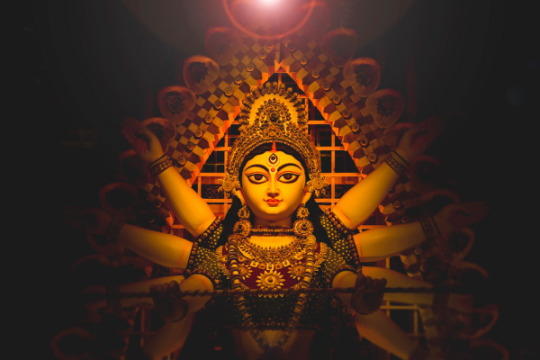
1. Vadodara, Gujarat:
Vadodara, also known as Baroda, is renowned for its grand Navratri celebrations. The city comes alive with elaborate garba and dandiya events. The United Way of Baroda's Navratri Festival is one of the most famous in the country. With its rich cultural heritage and a plethora of cultural programs, Vadodara is a top choice for Navratri enthusiasts.
2. Kolkata, West Bengal:
In Kolkata, Navratri is celebrated as Durga Puja. The city becomes a hub of artistic expression, with intricately crafted idols of goddess Durga. The grand processions and cultural performances make it a unique Navratri experience. Don't miss the dhunuchi dance and the iconic "sindoor khela" on Dashami.
3. Mysore, Karnataka:
Mysore is famous for its Dasara festival, which coincides with Navratri. The Mysore Palace is illuminated with thousands of lights, creating a magical ambiance. The grand procession with caparisoned elephants is a sight to behold. Mysore's Navratri celebrations offer a blend of tradition and grandeur.
4. Ahmedabad, Gujarat:
Ahmedabad hosts one of the most prominent Navratri celebrations in the world. The International Kite Festival is another highlight during this period. With non-stop garba events, mouth-watering Gujarati cuisine, and the vibrant atmosphere, Ahmedabad is a must-visit during Navratri.
5. Kullu, Himachal Pradesh:
Kullu Dussehra is celebrated with immense fervor in the Kullu Valley. The festival usually lasts for a week and includes processions, folk dances, and a huge congregation of deities. It's a unique experience that showcases the rich culture of Himachal Pradesh.
6. Delhi:
Delhi's Navratri celebrations are marked by grand events, beautifully decorated pandals, and artistic expressions of devotion. The famous Durga Puja pandals in CR Park and Chittaranjan Park are a sight to behold. Additionally, the city hosts numerous garba and dandiya events.
7. Mumbai, Maharashtra:
While Mumbai is known for its energetic Ganesh Chaturthi celebrations, Navratri also holds a special place in the hearts of the people. The city hosts a variety of dandiya events, and the immersion of goddess Durga's idol is a significant event.
8. Varanasi, Uttar Pradesh:
Varanasi, one of the oldest cities in the world, is a unique place to celebrate Navratri. The city's spiritual ambiance gets even more profound during this festival. The ghats of the Ganges River come alive with the sound of devotional songs and aarti ceremonies.
9. Jaipur, Rajasthan:
The Pink City, Jaipur, is known for its royal celebrations during Navratri. The folk dances and music performances at various heritage locations in Jaipur offer a memorable cultural experience. The city's architecture and palaces add to the charm of the celebrations.
10. Navratri Cruise, Goa:
If you're looking for a unique Navratri experience, consider the Navratri cruise in Goa. It offers a fusion of traditional and modern celebrations. Dance to the beats of garba while enjoying the scenic beauty of the Arabian Sea.
In conclusion, Navratri is a time of immense joy, spirituality, and cultural diversity. These ten places in India offer diverse experiences to celebrate this festive season. Whether you prefer traditional garba and dandiya or artistic expressions of devotion, there's a Navratri celebration for everyone. Make the most of this vibrant festival by exploring these incredible destinations. Happy Navratri!
#Navratri#best places to visit during Navratri#Places to Visit During Navratri#places to visit in navratri
2 notes
·
View notes
Text
Discover the Top Destinations for Celebrating Dussehra: Best Places to Visit

Dussehra, also known as Vijayadashami, is one of the most vibrant and widely celebrated festivals in India. It marks the triumph of good over evil and is a time when communities come together to celebrate with great fervor and enthusiasm. If you’re looking to immerse yourself in the spirit of Dussehra, here are some of the best places to visit in Dussehra.
1. Mysuru, Karnataka Mysuru, renowned for its grand Dussehra celebrations, tops the list of must-visit places during this festival. The city’s magnificent Mysore Palace is illuminated with thousands of lights, creating a mesmerizing spectacle. The royal procession, or “Jumbo Savari,” features beautifully decorated elephants and traditional dancers, making it a sight to behold.
2. Kolkata, West Bengal In Kolkata, Dussehra is celebrated with unmatched grandeur as Durga Puja. The city comes alive with beautifully crafted idols of Goddess Durga, cultural performances, and artistic pandals (temporary structures). Witness the elaborate immersion processions and immerse yourself in the rich culture of West Bengal during this time.
3. Varanasi, Uttar Pradesh Varanasi, one of the holiest cities in India, celebrates Dussehra with a unique twist. Devotees gather at the ghats along the Ganges River to witness the “Ravan Dahan,” where giant effigies of the demon king Ravana are set ablaze. The combination of spirituality and festivity creates a memorable experience.
4. Kota, Rajasthan Kota is famous for its traditional Ramayana plays during Dussehra. These plays, known as “Ramlila,” depict the life of Lord Rama and his victory over Ravana. The city’s vibrant processions and cultural events make it a fantastic destination for Dussehra enthusiasts.
5. Kullu, Himachal Pradesh Kullu in Himachal Pradesh celebrates Dussehra in a unique style with a week-long fair. The highlight is the colorful and lively processions, featuring idols from various local temples. It’s a perfect blend of tradition, culture, and natural beauty, as Kullu is surrounded by the stunning Himalayan landscape.
6. Delhi The capital city of India also observes Dussehra with great enthusiasm. The iconic Red Fort hosts a spectacular Ravan Dahan event, attracting thousands of visitors. Additionally, various cultural programs and fairs are organized throughout the city during the festival.
7. Bastar, Chhattisgarh For a more offbeat Dussehra experience, head to Bastar in Chhattisgarh. Here, you can witness the unique and ancient “Bastar Dussehra” celebrations. The tribal communities showcase their rich culture through traditional dance, music, and rituals.
In conclusion, Dussehra is a time of joy and unity in India, and these destinations offer diverse and enriching experiences to celebrate this auspicious occasion. Whether you’re drawn to the grandeur of Mysuru, the artistry of Kolkata, or the spirituality of Varanasi, each place has its unique way of embracing the festival’s spirit. Plan your trip to one of these best places to visit in Dussehra and enjoy to the fullest.
For more travel tips and information on celebrating festivals in India, stay tuned to our website. Happy Dussehra!
2 notes
·
View notes
Text
#Best Time to Visit Shimla for Snowfall#Best Time to Visit Himachal Pradesh#Himachal Traditional Dress#Himachali Lok Geet#Dance of Himachal Pradesh#Dance Form of Himachal Pradesh
0 notes
Text
Folk dance of Himachal Pradesh
Folk Dance :
Folk dance celebrates the cultural roots of a particular group of people. Folk dance is typically performed as a form of ritualistic entertainment at social gatherings. Some kinds of folk dance tell a culture's foundational stories, while others may simply emphasize cultural pride.
Nati :
Nati has a rich dance tradition. It is the most popular and famous dance performed at fairs and festivals. This dance is performed in the districts of Kullu, Sirmaur, Shimla, etc. of Himachal Pradesh.
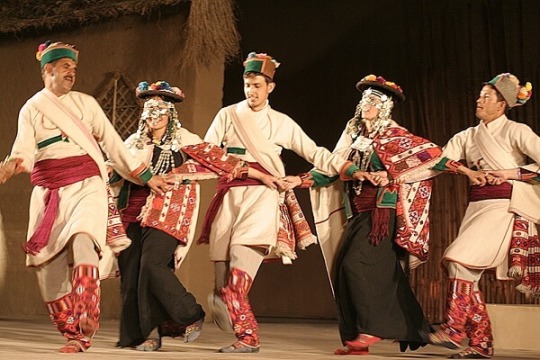
Dalshon and Cholamba Dance :
Cholamba Dance is one of the famous folk dances of Himachal Pradesh. This dance is performed in Ropa Valley. This dance is performed while coiling a snake. Whenever a Tiger is killed, the Cholamba dance is performed. In this dance skin and a gold ornament are put in the nose of a dead lion.

Kayang Mala Folk Dance :
Kinnaur region is famous for its dances. There are three types of folk dances in Kinnaur. The most popular of these is Kyang Mala. In this dance, men and women stand in a semicircle and the Bajantri stands in the center of the semicircle. A middle-aged man leads the men and a middle-aged woman leads the women.
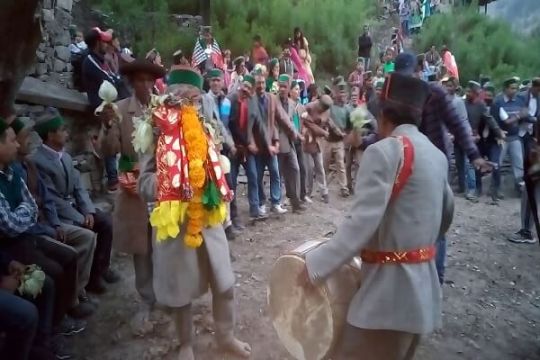
Dangi Folk Dance :
One of the major folk dances of Himachal Pradesh, this folk dance is based on one of the oldest folk tales and is performed in the temple of Naina Devi during the harvest season! It is dance form of the Chamba area and performed at festivals, weddings and during Jatara by the Gaddi women. Female dancers are mainly involved in Dangi folk dance.
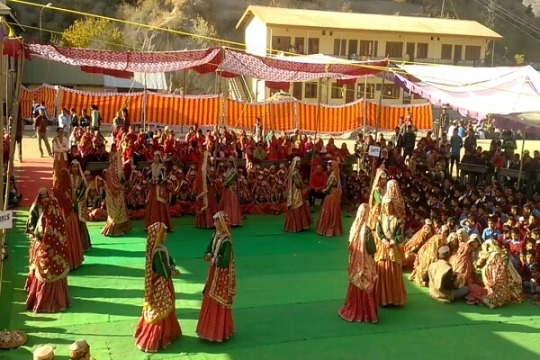
2 notes
·
View notes
Text
Joginder Singh Habbi
Joginder Singh, who got recognition in the state and country by the name of Joginder Habbi after successful work on the extinct and Tribal Art for the last 25 years, is a small farmer family belonging to the rural environment of Himachal Pradesh. He had deep interest in the folk arts of the region from beginning. Therefore, he started working in the local Kariyala Party from the age of 12. After working for 6 years in this team, he continued to serve as a folk dancer in many cultural groups. Due to the archaic cultural surroundings in the village along with schooling, he understood the culture and took interest in ancient beliefs and traditions. Due to the changing environment and the tendency of younger generation towards western culture, he determined to save the extinct culture .In order to fulfil this purpose, first of all, he established a cultural Group in 1998. After this, met the scholars of the area and gathered people who knew well about the ancient culture. Now he started working on such extinct genres that were integral to our ancient tradition. Sinhtoo Dance, Bharaltoo Dance and Dagyali dance are prominent among these extinct genres. He also created the costumes, Masks used in these genres. Joginder Singh has so far produced over 1000 youths in the field of culture of Himachal. He presented the ancient folk dances of Himachal Pradesh from a small village in the state to many parts of the country and also abroad. His cultural troupe has so far performed more than 5000 small and big stage performances. and their contribution in the field of culture is still going on.
2 notes
·
View notes
Text
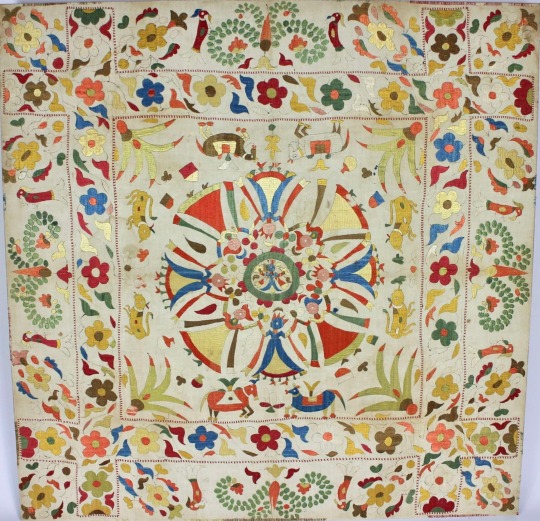
19th Century Chamba or Kangra rumal embroidery depicting Krishna's rasa dance with the gopis (milkmaids) bordered by flowers, trees, birds and animals. Foss silk embroidery on fine muslin. Himachal Pradesh, Northern India.
Stothert and Trice
171 notes
·
View notes
Text
Kasol - Tourist Places & Top Things to Do

Nestled in the heart of the Parvati Valley in Himachal Pradesh, Kasol is a serene hamlet that has increasingly gained popularity among travelers seeking a blend of adventure, tranquility, and cultural immersion. Known as the "Amsterdam of India," Kasol's charm lies in its lush green landscapes, gurgling Parvati River, and a laid-back vibe that attracts backpackers and nature enthusiasts alike. This blog will guide you through the top tourist places and activities to experience in this idyllic village.
Explore the Scenic Beauty of Kasol
Nature Walks and Trails
Kasol is a haven for nature lovers. The scenic trails along the Parvati River offer breathtaking views of the lush green mountains and dense forests. A leisurely walk by the river, listening to the soothing sounds of the water, is a rejuvenating experience.
Chalal Village Trek
A short trek from Kasol, Chalal Village is known for its rustic charm and vibrant culture. The trail is relatively easy and offers stunning views of the valley. Chalal is also famous for its trance and psychedelic parties, adding a unique cultural flavor to your trip.
Visit Manikaran Sahib
Spiritual Retreat
Just 4 kilometers from Kasol, Manikaran Sahib is a revered pilgrimage site for Sikhs and Hindus. The gurudwara is famous for its hot springs, which are believed to have therapeutic properties. The serene ambiance and the langar (community kitchen) serving free meals make it a must-visit.
Discover Tosh Village
Rustic Mountain Village
A bit further up the valley, Tosh Village is another gem that offers breathtaking views and a peaceful environment. The village is perched at an altitude of 2,400 meters and is surrounded by snow-capped peaks. It is a perfect spot for those looking to escape the hustle and bustle of city life.
Indulge in Israeli Cuisine
Café Hopping
Kasol is often referred to as Mini Israel due to its significant Israeli population and influence. The village is dotted with numerous cafes offering delicious Israeli cuisine. Places like Moon Dance Café, Evergreen Café, and Little Italy serve mouthwatering dishes like shakshuka, hummus, falafel, and more. Don't forget to try the famous apple pie and a cup of freshly brewed coffee.
Adventure Activities
Trekking and Camping
Kasol serves as a base for several treks, including the Kheerganga Trek, which is renowned for its hot springs and spectacular views. The Sar Pass Trek is another popular trek that attracts adventure enthusiasts from all over the world. Camping under the starry sky in the serene meadows of Kheerganga is an unforgettable experience.
Fishing and Angling
The Parvati River is ideal for fishing and angling. With a permit, you can try your hand at catching trout in the clear waters of the river.
Shop at the Local Markets
Handicrafts and Souvenirs
The local markets in Kasol are perfect for picking up souvenirs. You can find a variety of handmade items, woolen clothes, and jewelry. The vibrant markets reflect the local culture and are a delight to explore.
Attend the Local Festivals
Cultural Immersion
Kasol is known for its vibrant festivals and music events. The Parvati Peaking and Magica Festivals attract music lovers from around the world. These events are a great way to experience the local culture and enjoy some good music amidst nature.
Tips for Visiting Kasol
Best Time to Visit: The best time to visit Kasol is from March to June and from September to November when the weather is pleasant and ideal for outdoor activities.
Accommodation: Kasol offers a range of accommodation options, from budget hostels to luxury resorts. For a unique experience, consider staying in a riverside camp.
Safety: While Kasol is generally safe, it's always advisable to be cautious, especially when venturing into remote areas. Ensure you have all necessary permits for trekking and fishing.
Respect Local Culture: Kasol has a rich cultural heritage. Respect the local customs and traditions, and always seek permission before photographing people.
Conclusion
Kasol is a hidden gem in the Parvati Valley that offers a perfect blend of natural beauty, adventure, and cultural richness. Whether you're a backpacker, a nature lover, or someone seeking a peaceful retreat, Kasol has something to offer everyone. So pack your bags, and get ready to explore the enchanting beauty of Kasol and its surroundings.
#kasol famous cafe#kasol tourist places#kasol famous places#Best Travel Tips#Destination Guides#Travel Guides#tour for tips
0 notes
Text
Discover the Best Camping Destinations in India
Camping in India is an experience like no other, offering adventure lovers a unique opportunity to connect with nature, explore stunning landscapes, and unwind from the hustle and bustle of everyday life. Whether you are a seasoned camper or a novice looking to embark on your first adventure, India's diverse terrain offers something for everyone. As you pack your gear, don't forget the essentials, including a quality sleeping bag to ensure a comfortable night's rest under the stars. Let's explore some of the top camping destinations in India that promise an unforgettable outdoor experience.
1. Rishikesh, Uttarakhand
The Yoga Capital and Adventurer’s Paradise
Rishikesh is not only famous for its spiritual retreats but also for its thrilling adventure activities. Nestled in the foothills of the Himalayas, this picturesque town offers numerous camping sites along the banks of the Ganges River. Campers can enjoy river rafting, bungee jumping, and yoga sessions by the river, making it a perfect blend of adventure and tranquility.
2. Spiti Valley, Himachal Pradesh
The Land of Monasteries and Majestic Landscapes
Spiti Valley, known for its stark beauty and rugged terrain, is an ideal destination for those seeking solitude and a connection with nature. Camping here allows you to explore ancient monasteries, trek through beautiful trails, and immerse yourself in the serene beauty of the Himalayas. The clear night skies in Spiti are perfect for stargazing.
3. Jaisalmer, Rajasthan
Desert Camping Under the Starry Sky
Experience the magic of the Thar Desert by camping in Jaisalmer. The golden sand dunes provide a stunning backdrop for a night under the stars. Enjoy camel safaris, traditional Rajasthani music, and dance performances around the campfire. This desert adventure offers a unique camping experience in India.
4. Coorg, Karnataka
The Scotland of India
Known for its lush coffee plantations and misty landscapes, Coorg is a paradise for nature lovers. Camping in Coorg allows you to explore dense forests, enjoy bird watching, and trek to beautiful waterfalls. The pleasant weather and scenic beauty make it a perfect camping destination throughout the year.
5. Tso Moriri, Ladakh
High-Altitude Camping by a Tranquil Lake
Located at an altitude of 15,000 feet, Tso Moriri is one of the highest lakes in the world. Camping here is a surreal experience, with the pristine blue waters of the lake reflecting the surrounding snow-capped peaks. This remote destination offers peace, solitude, and breathtaking views.
6. Munnar, Kerala
Camping Amidst Tea Gardens and Rolling Hills
Munnar, with its endless stretches of tea gardens, rolling hills, and pleasant climate, is a popular camping destination in South India. Campers can explore the Eravikulam National Park, trek to Anamudi Peak, and enjoy the serene beauty of the Western Ghats. The lush greenery and cool climate make it an ideal spot for camping.
7. Nameri National Park, Assam
Wilderness Camping in the Northeast
For those who love wildlife and nature, Nameri National Park in Assam offers an exciting camping experience. Located along the banks of the Jia Bhoroli River, the park is home to diverse flora and fauna, including elephants, tigers, and various bird species. Enjoy river rafting, bird watching, and nature trails while camping in this beautiful national park.
8. Panchgani, Maharashtra
Camping in the Sahyadri Hills
Panchgani, with its lush green hills and scenic valleys, is a perfect camping spot in Maharashtra. The region is known for its strawberry farms, picturesque views, and pleasant weather. Campers can enjoy activities like paragliding, trekking, and exploring the nearby Table Land, which is one of the largest volcanic plateaus in Asia.
9. Auli, Uttarakhand
Camping in the Skiing Capital of India
Auli, famous for its skiing slopes, also offers fantastic camping opportunities. Surrounded by oak and coniferous forests, Auli provides stunning views of the Nanda Devi and Nar Parvat mountains. Camping here in the summer months allows you to enjoy trekking, while in winter, you can experience snow camping and skiing.
10. Chikmagalur, Karnataka
Coffee Land Camping
Chikmagalur, with its serene coffee plantations and pleasant climate, is an excellent camping destination. Nestled in the Western Ghats, it offers a peaceful retreat for nature lovers. Explore the Mullayanagiri peak, the highest in Karnataka, and enjoy activities like trekking, bird watching, and coffee plantation tours.
0 notes